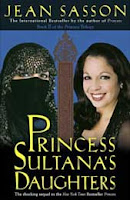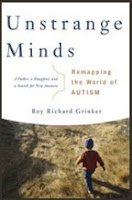by Jean Sasson
 This is the third book telling the story of Princess Sultana, member of a Saudi Arabian royal family. In unfolding further events in the lives of her family, friends, relatives and acquaintances, she reveals many more injustices and indignities committed against women in the strict Muslim culture. In addition to her struggles to protect and further the cause of women in her country, Sultana shows a more personal side in Princess Sultana\’s Circle. The life of a rich, sequestered princess is difficult for me to relate to until I see her private struggles: her attempts to become a more patient and spiritual person, to overcome a weakness for alcohol and deal with her daughter\’s revolutionary activities all made her less a foreign personage to me.
This is the third book telling the story of Princess Sultana, member of a Saudi Arabian royal family. In unfolding further events in the lives of her family, friends, relatives and acquaintances, she reveals many more injustices and indignities committed against women in the strict Muslim culture. In addition to her struggles to protect and further the cause of women in her country, Sultana shows a more personal side in Princess Sultana\’s Circle. The life of a rich, sequestered princess is difficult for me to relate to until I see her private struggles: her attempts to become a more patient and spiritual person, to overcome a weakness for alcohol and deal with her daughter\’s revolutionary activities all made her less a foreign personage to me.
There is also a vivid picture in this book of how the fabulously wealthy live. It seemed to me that you could tell a lot about the people in the story by reading what they spent their money on: one friend had an enormous book collection, others private zoos of exotic animals; Sultana herself bought tons of expensive clothes (she gave many away to friends), and donated large amounts of money to the poor. Others used their money to gratify lust- some to a degrading extent, and against the will of women involved. It was these women Sultana strove to help and succor.
My favorite part of the book was when Sultana\’s family was forced to flee their palace for a while, and spent a period of time living in the desert alongside some Bedouin people. It was very interesting.
For further information, visit the author\’s website.
Rating: 4/5 Published: 2000, pp 255







